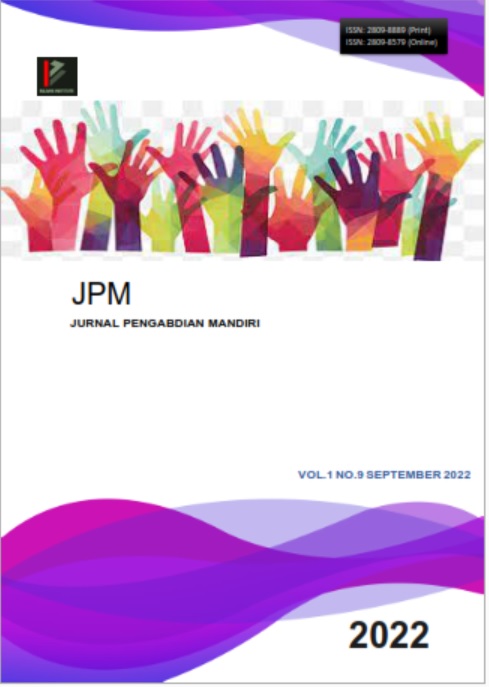EDUKASI PENILAIAN STUNTING DAN STATUS GIZI BALITA PADA MASYARAKAT
Abstract
Stunting happens since the baby was still in the womb and early after the baby is born, but the stunting condition only appears after the child is 2 years old. The prevalence of infants under two years of age experiencing stunting in East Kalimantan is 29.2%, thus causing East Kalimantan to occupy the position of the province with the highest number of stunting cases with the seventeenth rank in Indonesia. The purpose of this activity is to increase the knowledge of mothers who have children under two on how to determine whether a child is in the stunting category and also determine the nutritional status of children. The method of carrying out activities was carried out through several stages, namely starting with identifying problems in the field, determining problem priorities, planning activities, and conducting evaluations. The results of the activity increased knowledge by 3% after being given education. Such activities need to be routinely carried out in the community to improve the health status of the community.
References
Ariani, M. (2020). Determinan Penyebab Kejadian Stunting Pada Balita. Dinamika Kesehatan Jurnal Kebidanan dan Keperawatan Vol 11 No. 1 Juli 2020.
Dinkes kaltim. (2021). Data Prevalensi stunting provinsi Kalimantan Timur tahun 2018 - 2020.https://data.kaltimprov.go.id/dataset/data-prevalensi-stunting-provinsi-kaltim-tahun-2018-2020
Ernawati, R. (2021). Hubungan Antara Jarak kehamilan dan Kehamilan Remaja dengan kejadian Stunting di Puskesmas Harapan Baru Samarinda. Journal of Midwifery and Reproduction, 4(2), 56–63. journal.umbjm.ac.id/index.php/midwiferyandreproduction Nutrition:
Ertiana, D. (2017). Program Peningkatan Kesehatan Remaja Melalui Posyandu Remaja. Journal of Community Engagement And, December, 38–45. https://core.ac.uk/download/pdf/322576805.pdf
Kemenkes RI, (2018).Hasil Utama Riskesdas Proporsi status gizi buruk dan gizi kurang pada balita tahun 2007 - 2018
Kemenkes RI, (2018). Pusdatin : Situasi Balita Pendek (Stunting) di Indonesia.https;//pusdatin.kemenkes.go.id/assets/images/publikasi/buletin stunting
Khairani, P. (2020). Situasi Stunting di Indonesia. Pusat Data Dan Informasi Kesehatan.
Nasution, S. M. (2018). Pengaruh usia kehamilan, jarak kehamilan, komplikasi kehamilan,.
Nurmala, I., Fauzie, R., Nugroho, A., Erlyani, N., Laily , N., & Anhar, V. Y. (2018). Promosi Kesehatan (Cetakan 1). Airlangga University Press.
Pakpahan, M., Siregar, D., Susilawaty, A., Tasnim, Mustar, Radeny, R., Manurung, E. I., Sianturi, E., Tompunu, M. R. G., Sitanggang, Y. F., & Maisyarah, M. (2021). Promosi Kesehatan & Perilaku Kesehatan. In Jakarta: EGC. yayasan Kita Menu.
TNP2K. (2017). Buku Ringkasan Stunting. Tim Nasional Percepatan Penanggulangan Kemiskinan(TNP2K). http://www.tnp2k.go.id/images/uploads/downloads/Buku Ringkasan Stunting.pdf
Wahyuntari, E., & Ismarwati, I. (2020). Pembentukan kader kesehatan posyandu remaja Bokoharjo Prambanan. Jurnal Inovasi Abdimas Kebidanan (Jiak), 1(1), 14–18. https://doi.org/10.32536/jpma.v1i1.65
Downloads
Published
How to Cite
Issue
Section
License
Copyright (c) 2022 JURNAL PENGABDIAN MANDIRI

This work is licensed under a Creative Commons Attribution-NonCommercial-NoDerivatives 4.0 International License.











